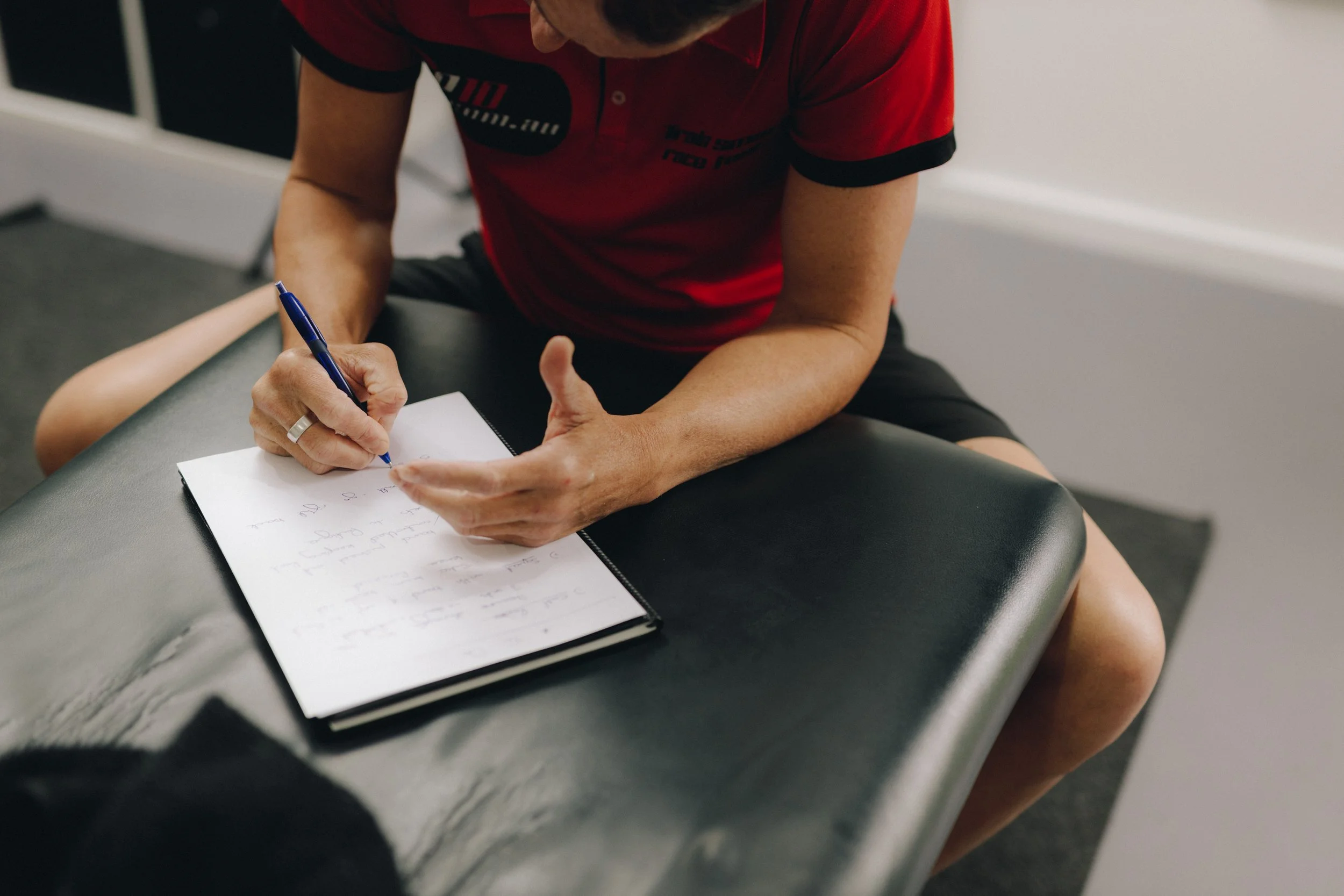
Frequently Asked Questions
Bike Fitting
Our Philosophy
A good bike fit is about more than saddle height — it’s about connecting your body, bike, and goals. With 20 years as a physiotherapist, a strength & conditioning background, and 25 years racing across road, triathlon, and MTB, I understand cycling from every angle.
I assess you as well as your bike — flexibility, strength, movement patterns, and injury history — to create a position that’s efficient, sustainable, and tailored to your goals.
FAQ
What is a bike fit, and why is it important?
It’s about harmony between rider and machine. A fit improves comfort, prevents injury, and enhances performance across road, triathlon, and MTB.
How is your approach different?
I combine:
Physiotherapy expertise (20 yrs) — biomechanics, injury prevention
Strength & Conditioning — resilience and efficiency off the bike
Racing experience (25 yrs) — real-world performance demands
What rider problems can it help with?
Knee, hip, or ITB pain
Back/neck stiffness
Numbness in hands, feet, or saddle region
Saddle sores or pressure issues
Pedalling inefficiency or uneven power
Excess fatigue or poor run performance
How long does it take?
1.5–2 hours, including injury/training history, rider assessment, on-bike analysis, adjustments, cleat/saddle/cockpit setup, and tailored exercise advice.
Who benefits?
All riders — from beginners to elites.
How often should I review my fit?
Every 1–2 years, or after major changes (new bike/shoes, injury, training load).
Physiotherapy
Our Philosophy
Physio is about more than treating pain — it’s about finding causes and restoring confidence in movement. With 20 years’ experience, S&C training, and 10 years as Head Physio & S&C Coach with the Australian Olympic Team, I combine evidence-based care with practical strategies that work for both elite athletes and everyday people.
FAQ
What does a physio do?
Restore movement, reduce pain, and improve quality of life by addressing causes, not just symptoms.
What conditions do you treat?
Back/neck pain (incl. desk-related)
Joint stiffness & mobility issues
Muscle strains/overuse injuries
Headaches & tension pain
Stress-related tightness
Post-surgical rehab (ACL, shoulder, spine)
Sports & recreational injuries
How do you find the cause?
I assess lifestyle, stress, movement, strength, and training loads to address both symptoms and root causes.
What treatments do you use?
Manual therapy
Exercise-based rehab
Dry needling/taping (where appropriate)
Education on stress, recovery, and habits
Lifestyle/ergonomic advice
How many sessions will I need?
It varies. Some resolve quickly; others (e.g. long-term or post-op) need structured care. You’ll get a clear plan from session one.
Who benefits?
Everyone — athletes, desk workers, tradies, parents, older adults.
Do you accept private health or Medicare?
Yes. On-the-spot private claims (depending on cover), Medicare with GP plan, and WorkCover/Third Party (with referral).
Running Assessments
Our Philosophy
Running should feel smooth and efficient. Using treadmill and on-road filming, I analyse your gait, blend physiotherapy with real running experience, and help you run faster, safer, and with confidence.
FAQ
What is a running assessment?
Video analysis of technique, biomechanics, stride, and posture with clear feedback and exercises.
Who is it for?
Beginners learning safely
Recreational runners chasing PBs
Injured runners finding the cause
Competitive athletes fine-tuning performance
What problems can it help with?
Recurrent injuries (shin splints, knee pain, ITB, plantar fasciitis)
Technique inefficiencies and fatigue
Overstriding, poor cadence, vertical bounce
Load-related injury patterns
What’s included?
Video analysis, biomechanical breakdown, strength/mobility tests, feedback session, and tailored drills.
How long does it take?
60–90 minutes.
Swimming Assessments
Our Philosophy
Swimming was once my weakness — now it’s a strength. With 20 years’ experience in physio and endurance sport, I know the struggle and the process of improvement. I help swimmers of all levels move efficiently, reduce drag, and enjoy the water.
FAQ
What is a swimming assessment?
Pool filming (above & below water where available), stroke mechanics analysis, and tailored drills to improve efficiency and prevent injury.
Who is it for?
Beginners through to elite triathletes/swimmers.
What problems can it help with?
Shoulder overload
Breathing or timing issues
Poor body position/drag
Stroke rate, kick, or catch inefficiency
What’s included?
Filming, stroke analysis, feedback, mobility/strength testing, drills and exercises.
How long does it take?
60–90 minutes.
Strength & Conditioning Programming
Our Philosophy
S&C isn’t just for athletes — it’s for anyone who wants to move better, prevent injury, and feel stronger. With 20 years as a physio, formal S&C education, and 10 years leading Olympic S&C programs, I apply proven principles of performance and resilience to every client.
FAQ
What is S&C programming?
A structured, personalised plan to improve strength, mobility, stability, and performance.
Who is it for?
Athletes — performance & injury prevention
Active people — to move well & avoid injuries
Everyday clients — resilience for work, life, ageing
What makes your approach different?
Physiotherapy expertise — identify weak links
S&C knowledge — evidence-based programming
Olympic-level experience — principles scaled to your needs
What goals can it help with?
Strength, fitness, injury prevention, posture, performance, and long-term resilience.
What’s included?
Assessment, personalised program (gym/home), progression plans, integration with lifestyle/sport, and education.
Do I need gym experience?
No. Programs are tailored for beginners through to advanced athletes.
How long does a program run?
Typically 4–6 weeks per block, adjusted as you progress.
